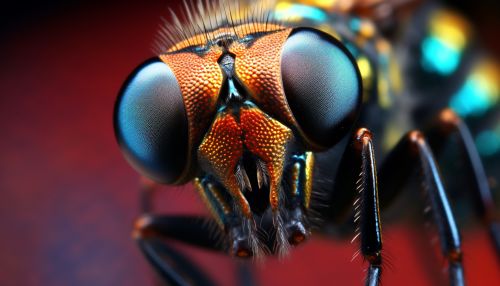Antennae
Introduction
Antennae, also known as feelers or sensors, are sensory appendages primarily found in the arthropod kingdom. They are used for various sensory functions such as touch, taste, heat detection, and the detection of chemical signals, known as chemoreception. Antennae are highly variable in form and function, reflecting the diversity of sensory tasks they perform.


Anatomy and Morphology
Antennae are typically segmented and located on the head of the arthropod. The number of segments varies greatly among different groups of arthropods, ranging from a few to many. The basic structure of an antenna consists of three parts: the scape, pedicel, and flagellum. The scape is the base segment that attaches the antenna to the head, the pedicel is the second segment, and the flagellum is the remaining part of the antenna, which can be further divided into many subsegments.
Functions
Antennae serve a variety of sensory functions in arthropods. They are primarily used for chemoreception, the detection of chemical signals in the environment. This is crucial for many aspects of an arthropod's life, including finding food, avoiding predators, and locating mates. Antennae are also used for mechanoreception, the detection of physical forces such as touch and vibration. In some arthropods, antennae are used for thermoreception, the detection of temperature changes.
Antennae in Different Arthropods
The form and function of antennae can vary greatly among different groups of arthropods.
Insects
In insects, antennae are typically long and segmented, with many fine hairs that increase their sensory surface area. They are used for a variety of sensory tasks, including chemoreception, mechanoreception, and thermoreception. Some insects also use their antennae for auditory reception, detecting sound waves through the vibration of the antennal segments.
Crustaceans
In crustaceans, antennae are often larger and more robust than in insects. They are typically used for chemoreception and mechanoreception, but can also be used for other tasks. For example, some crustaceans use their antennae for locomotion, using them as paddles to swim through the water.
Arachnids
In arachnids, which include spiders and scorpions, antennae are typically absent. Instead, these animals have specialized sensory structures called pedipalps, which serve similar functions to antennae.
Evolution
The evolution of antennae in arthropods is a complex topic. It is generally believed that the ancestral arthropod had a pair of antennae, and that these have been lost or modified in various lineages over time. For example, the absence of antennae in arachnids is thought to be a secondary loss, with the pedipalps evolving to take over their sensory functions.
